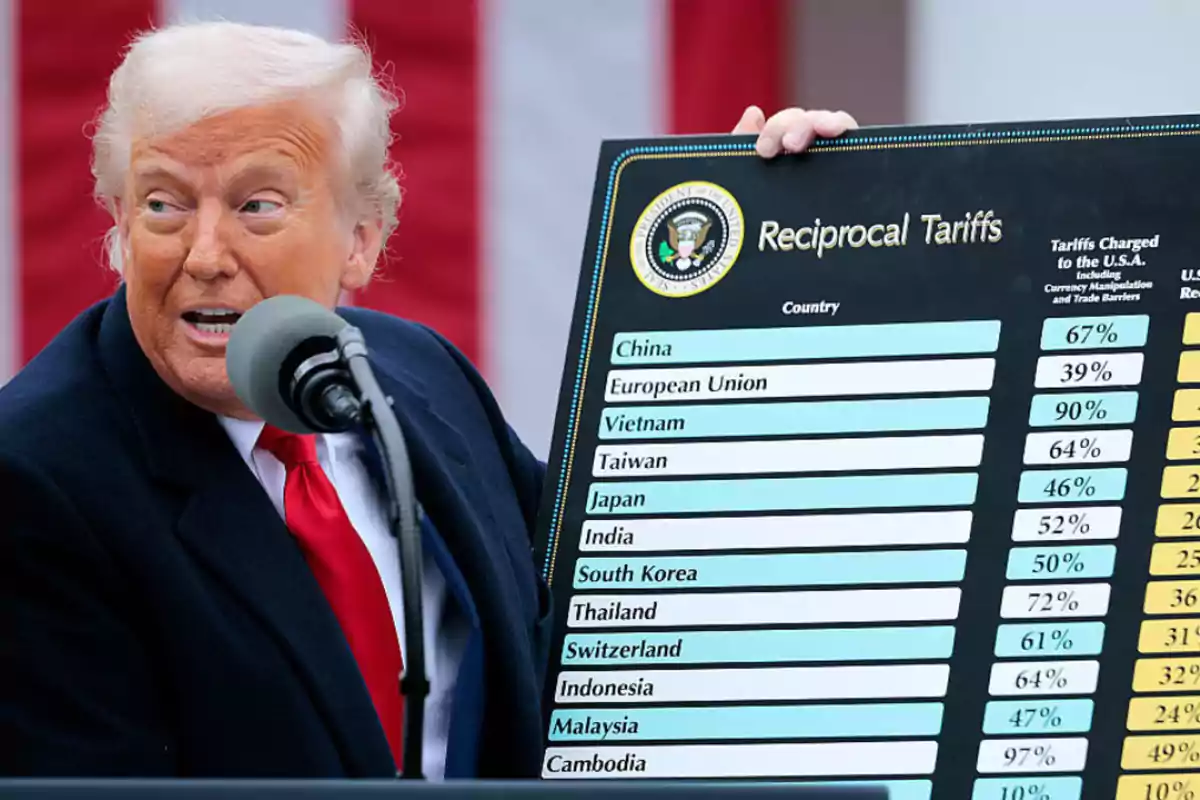
The United States economy grew more than expected in the second quarter.
Contrary to what many experts had predicted, the United States economy has grown more than expected and there has been a decrease in inflation
The Department of Commerce reported this Wednesday that the U.S. economy grew at a much stronger pace than expected in the second half, driven by a rebound in household spending and an adjustment in the trade balance thanks to Trump's tariff policies.
The gross domestic product (GDP), which represents the sum of goods and services activity across the vast U.S. economy, increased by 3% during the April to June period, according to figures adjusted for seasonality and inflation.
Economists expected 2% growth from April to June, so a 3% increase represents a much stronger pace than expected.

The numbers that excite the White House
Consumer spending increased by 1.4% in the second quarter, above the 0.5% of the previous period. Although exports fell by 1.8% during the quarter, imports were reduced by 30.3%, reversing the 37.9% increase from the first quarter.
The GDP report also shows strength in key areas of the economy, as well as signs that inflation inherited from the Biden administration is decreasing, although it hasn't been completely eradicated.
Thus, the personal consumption expenditures price index (PCE), the Federal Reserve's preferred measure of inflation, showed a 2.1% increase in the quarter, just above the central bank's 2% target. Excluding volatile food and energy prices, so-called PCE inflation increased by 2.5%, well below the 3.5% in the first quarter.

Trump's trade policy is already a success
"The anti-Trump narrative has been that we're going to have a recession or a depression because of the tariffs, which will drive up prices and cause a flight from consumption," said Kevin Hassett, director of the White House National Economic Council.
The reported period this Wednesday includes last April 2, when Trump announced the "Liberation Day," on which he imposed new tariffs and reconfigured global trade.
Companies mistakenly tried to anticipate these tariffs and rushed to bring in foreign goods, which caused a drop in GDP in the months from January to March, since imports are subtracted in its calculation.
Nevertheless, over the past three months, Trump has tilted the trade balance back in favor of the United States, closing trade deals with world leaders that help pay for the massive tax cuts he signed into law last July 4.

The FED refuses to lower rates
On his social media, the president, in addition to celebrating the good economic news, replied to the GDP report with a new request to the Federal Reserve to lower interest rates, something that current commissioner Jerome Powell refuses to do.
"2Q GDP JUST CAME OUT: 3%, MUCH BETTER THAN EXPECTED! 'Too late Powell' MUST LOWER THE RATE NOW. No inflation! Let people buy and refinance their homes!" Trump stated.
Indeed, the Federal Reserve met this afternoon and inexplicably decided to keep its benchmark interest rate in the 4.25%-4.5% range, with this number not having been changed since December.

More posts: